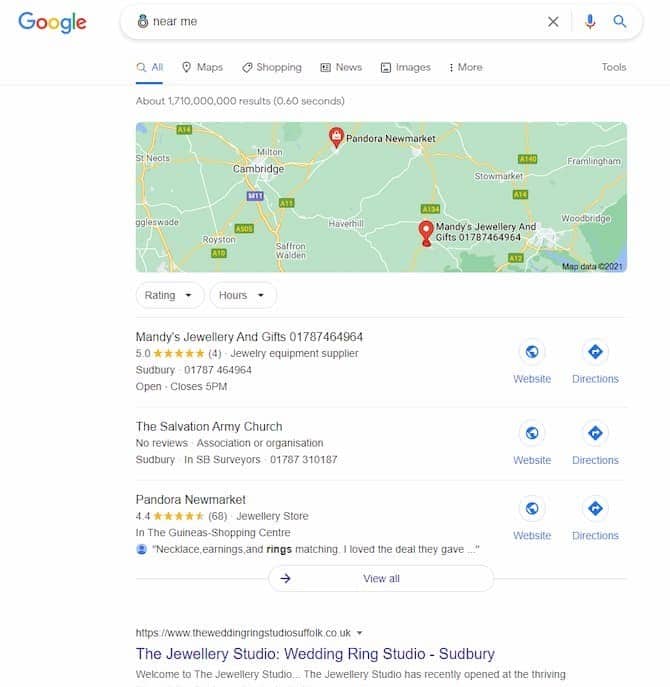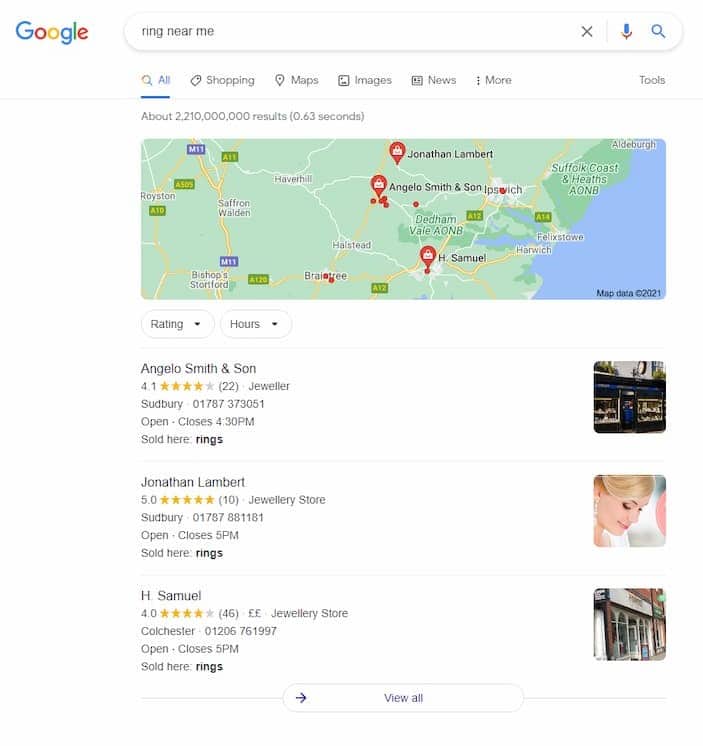Emojis have become engrained into our modern technological landscape and are one of the most universally recognised ways of communicating.
Their visual nature and ability to be associated with feelings and emotions can contribute towards the clarity, ‘searchability’ and tone of your content. For businesses, their usefulness will largely depend on the type of company you operate and how you want to present your brand.
How do emojis influence SEO?
Firstly, it should be established whether using emojis would have any value in driving organic traffic to your website. The main benefit of using emojis is that it allows your website to stand out in the search results by breaking up the text-heavy search engine results page with some visuals and colour.
The user’s eyes will naturally be drawn to these elements and therefore to your listing. Obviously, the emojis you choose should be relevant to your content and website’s purpose, rather than being used for the sake of variety. It should be noted that Google and other search engines are constantly trying to echo the language of humans. So if your emoji feels out of place or like spam, it may be filtered out. This is especially true after the page title update, where page titles with emojis are rewritten 95% of the time.
Generally, using emojis for your website is most useful for local businesses or listings as they can distinguish your webpage from the larger corporations or chains that may be more formal in tone. One example can be seen in the images below for searches for ‘ring near me’, where you can see that the two searches generate completely different results.
The emoji search results have a much smaller search volume and lean towards niche and smaller businesses, but the text search results have a more varied mix. The benefit of trying to rank for the emoji version is that there would generally be less competition – in the example, there are over 2 billion total text search results, whereas for the emoji version there are just over 1.7 billion in total.
This may seem like a small difference, but these variances can play in your favour if you are a smaller business targeting a local audience.


When used right, emojis can provide the opportunity to rank for an alternative version of a high-volume keyword and therefore have the opportunity to rank higher, assuming your content and user experience is of a good quality.
Using emojis can also help to build a human side to your business by expressing emotion and a sense of humour – however, be aware that your emoji usage should correlate to your brand’s tone of voice.
How should I use emojis for social media?
Emojis have mostly found their foothold through social media as a conversational way to convey tone and the intention behind a message. Brands have picked up on this over the years and carried it across to their own social marketing.
As mentioned previously, the use of emojis helps to establish a sense of humanity, trust and enthusiasm. It can be tempting to go overboard with the use of emojis, but this should be avoided in order to not appear as spam or end up frustrating your audience. However, using emojis in the right context and at the right place helps to break up text, catch the eye of your audience and promote the desired tone for your business.
Much like with SEO, make sure the emojis you use are relevant to your business or the overall emotion relating to the social post. Your message should be clear and not easily misconstrued by your audience. In other words, avoid using emojis purely for the sake of it.
An example of emojis becoming devoid of meaning due to their seeming irrelevance is with House of Fraser’s infamous #Emojinal campaign in 2016, which left followers feeling confused. The series of Tweets heavily featured a string of seemingly unrelated emojis and often no other text or imagery. This meant that there seemed to be a lack of purpose with no obvious messaging behind the campaign.

The emojis should also reflect your brand’s messaging and values, so if you work in a business that is typically B2B and professional in tone, you should generally avoid using misaligned emojis such as the heart eyes.
Whereas, if you work in a more light-hearted or informal B2C business, this could be more appropriate if used in moderation and taking your target audience into consideration at all times.
Should I use emojis in email marketing?
Emojis have found their place in email marketing as a way to divide up text-heavy content in a fun and creative manner. In particular, subject lines have seen a key benefit from emoji use by hooking in the audience and standing out in an inbox.
However, emails are where you should particularly pay attention to excessive emoji use, as too many can be registered as spam. As a good rule of thumb, only include one relevant emoji in your subject line, which should reflect the email’s subject matter and content. In fact, according to a report by Return Path, brands who used an emoji in their email subject lines had a higher open rate than those who had only text.
In the case of the email’s content, emojis should be used to complement the content rather than directly replace it. Using emojis within the email to support your brand’s tone of voice and content can be a great way to interact and establish a relationship with your reader.
However, you should avoid overusing emojis within the email itself or this can appear as irritating or unprofessional.

summary
Overall, emojis have become a universal way of communicating emotion and establishing the tone behind text. When carried through to business messaging, they have to be used appropriately in order to strike a balance between professionalism and friendliness, otherwise they can deliver the opposite. Likewise, your sector and your values will also steer if and how you use emojis.
If you are looking for support with your marketing communications, please email our customer services team at customerservice@mackman.co.uk.
